Individual Differences in Aesthetic Preferences for Multi-Sensorial Stimulation
Abstract
1. Introduction
1.1. Aesthetics in Multi-Sensorial Stimulation
1.2. Individual Differences in Aesthetics
1.3. The Qmulti Protocol
1.3.1. The Q-Sorting Procedure and Corresponding Q-Factor Analysis
1.3.2. The Distinction between Preference and Dominance
1.3.3. The Dedicated R Script of Qmulti Protocol
1.4. Current Project
- Which are the overall preferred characteristics of each variable of the IOs?
- Which are the important variables that influence people’s preference of the IOs?
- Do people systematically differ in their aesthetic judgement about the IOs?
- Do different clusters of people prefer different characteristics of a variable of the IOs?
- Are different clusters of people driven by different variables of the IOs?
2. Method
2.1. Participants
2.2. Materials
2.3. Procedure
2.4. Ethics
3. Results
3.1. Research Question One: Overall Preference
3.2. Research Question Two: Overall Dominance
3.3. Research Question Three: Individual Differences
3.4. Research Question Four: Interaction between Individual Differences and Preferences
3.5. Research Question Five: Interaction between Individual Differences and Dominance
4. Discussion
4.1. Overall Preferences
4.1.1. Vibration
4.1.2. Roughness
4.1.3. Roundness
4.1.4. Size
4.2. Overall Dominance
4.3. Individual Differences
5. Conclusions
Author Contributions
Funding
Conflicts of Interest
References
- Backer, D. Did You Know Bmw’s Door Click Had a Composer? It’s Emar Vegt, an Aural Designer. Wired Magazine. 13 April 2013. Available online: http://www.wired.co.uk/article/music-to-drive-to (accessed on 5 March 2019).
- Parizet, E.; Guyader, E.; Nosulenko, V. Analysis of car door closing sound quality. Appl. Acoust. 2008, 69, 12–22. [Google Scholar] [CrossRef]
- Schifferstein, H.N.J.; Spence, C. Product Experience; Elsevier: Berlin, Germany, 2008. [Google Scholar]
- Carbon, C.C.; Jakesch, M. A model for haptic aesthetic processing and its implications for design. Proc. IEEE 2013, 101, 2123–2133. [Google Scholar] [CrossRef]
- Muth, C.; Ebert, S.; Marković, S.; Carbon, C.C. “Aha” ptics: Enjoying an Aesthetic Aha During Haptic Exploration. Perception 2019, 48, 3–25. [Google Scholar] [CrossRef] [PubMed]
- Soranzo, A.; Petrelli, D.; Ciolfi, L.; Reidy, J. On the perceptual aesthetics of interactive objects. Q. J. Exp. Psychol. 2018, 71, 2586–2602. [Google Scholar] [CrossRef] [PubMed]
- Chandler, A.R. Recent experiments on visual aesthetics. Psychol. Bull. 1928, 25, 720–732. [Google Scholar] [CrossRef]
- Woodworth, R.S. Experimental Psychology; H. Holt and Company: New York, NY, USA, 1938. [Google Scholar]
- Palmer, S.E.; Griscom, W.S. Accounting for taste: Individual differences in preference for harmony. Psychon. Bull. Rev. 2013, 20, 453–461. [Google Scholar] [CrossRef] [PubMed]
- Appelt, K.C.; Milch, K.F.; Handgraaf, M.J.; Weber, E.U. The decision making individual differences inventory and guidelines for the study of individual differences in judgment and decision-making research. Judgm. Decis. Mak. 2011, 6, 252–262. [Google Scholar]
- McManus, I.C. The aesthetics of simple figures. Br. J. Psychol. 1980, 71, 505–524. [Google Scholar] [CrossRef] [PubMed]
- McManus, I.C.; Cook, R.; Hunt, A. Beyond the Golden Section and normative aesthetics: Why do individuals differ so much in their aesthetic preferences for rectangles? Psychol. Aesthet. Creat. Arts 2010, 4, 113–126. [Google Scholar] [CrossRef]
- Birkhoff, G.D. Aesthetic Measure; Harvard University Press: Cambridge, MA, USA, 1933. [Google Scholar]
- Ekman, G.; Hosman, J.; Lindstrom, B. Roughness, smoothness, and preference: A study of quantitative relations in individual subjects. J. Exp. Psychol. 1965, 70, 18–26. [Google Scholar] [CrossRef]
- Thorndike, E.L. Individual differences in judgments of the beauty of simple forms. Psychol. Rev. 1917, 24, 147–153. [Google Scholar] [CrossRef]
- Spehar, B.; Walker, N.; Taylor, R.P. Taxonomy of Individual Variations in Aesthetic Responses to Fractal Patterns. Front. Hum. Neurosci. 2016, 10, 350. [Google Scholar] [CrossRef] [PubMed]
- Gao, J.; Soranzo, A. Applying Q-methodology to experimental aesthetics. Methods Psychol. Submitted.
- Stephenson, W. Technique of Factor Analysis. Nature 1935, 136, 297. [Google Scholar] [CrossRef]
- Watts, S.; Stenner, P. Doing Q Methodological Research: Theory, Method and Interpretation; SAGE Publications: London, UK, 2012. [Google Scholar]
- Team, R.C. R: A Language and Environment for Statistical Computing; R Foundation for Statistical Computing: Vienna, Austria, 2018. [Google Scholar]
- Zabala, A. qmethod: A Package to Explore Human Perspectives Using Q Methodology. R J. 2014, 6, 163–173. [Google Scholar] [CrossRef]
- Christensen, R.H.B. Ordinal-Regression Models for Ordinal Data. R Package Version. 25 August 2018. Available online: http://www.cran.r-project.org/package=ordinal/ (accessed on 5 March 2019).
- Dowle, M.; Srinivasan, A.; Gorecki, J.; Chirico, M.; Stetsenko, P.; Short, T.; Steve Lianoglou, S.; Eduard Antonyan, E.; Bonsch, M.; Parsonage, H.; et al. Package ‘Data. Table’. 2019. Available online: https://cran.r-project.org/web/packages/data.table/data.table.pdf (accessed on 1 August 2019).
- Zabala, A.; Pascual, U. Bootstrapping Q-methodology to improve the understanding of human perspectives. PLoS ONE 2016, 11, e0148087. [Google Scholar] [CrossRef]
- Etzi, R.; Spence, C.; Gallace, A. Textures that we like to touch: An experimental study of aesthetic preferences for tactile stimuli. Conscious. Cognit. 2014, 29, 178–188. [Google Scholar] [CrossRef]
- Rowell, J.; Ungar, S. Feeling your way—A tactile map user survey. In Proceedings of the 21st International Cartographic Conference, Durban, South Africa, 10–16 August 2003. [Google Scholar] [CrossRef]
- Jehoel, S.; Ungar, S.; McCallum, D.; Rowell, J. An Evaluation of Substrates for Tactile Maps and Diagrams: Scanning Speed and Users’ Preferences. J. Vis. Impair. Blind. 2005, 99, 85–95. [Google Scholar] [CrossRef]
- Tiest, W.M.B. Tactual perception of material properties. Vis. Res. 2010, 50, 2775–2782. [Google Scholar] [CrossRef]
- Bertamini, M.; Palumbo, L.; Gheorghes, T.N.; Galatsidas, M. Do observers like curvature or do they dislike angularity? Br. J. Psychol. 2015, 107, 154–178. [Google Scholar] [CrossRef]
- Silvera, D.H.; Josephs, R.A.; Giesler, R.B. Bigger is better: The influence of physical size on aesthetic preference judgments. J. Behav. Decis. Mak. 2002, 15, 189–202. [Google Scholar] [CrossRef]
- Latto, R. The brain of the beholder. In The Artful Eye; Gregory, R.L., Harris, J., Heard, P., Rose, D., Eds.; Oxford University Press: Oxford, UK, 1995; pp. 66–94. [Google Scholar]

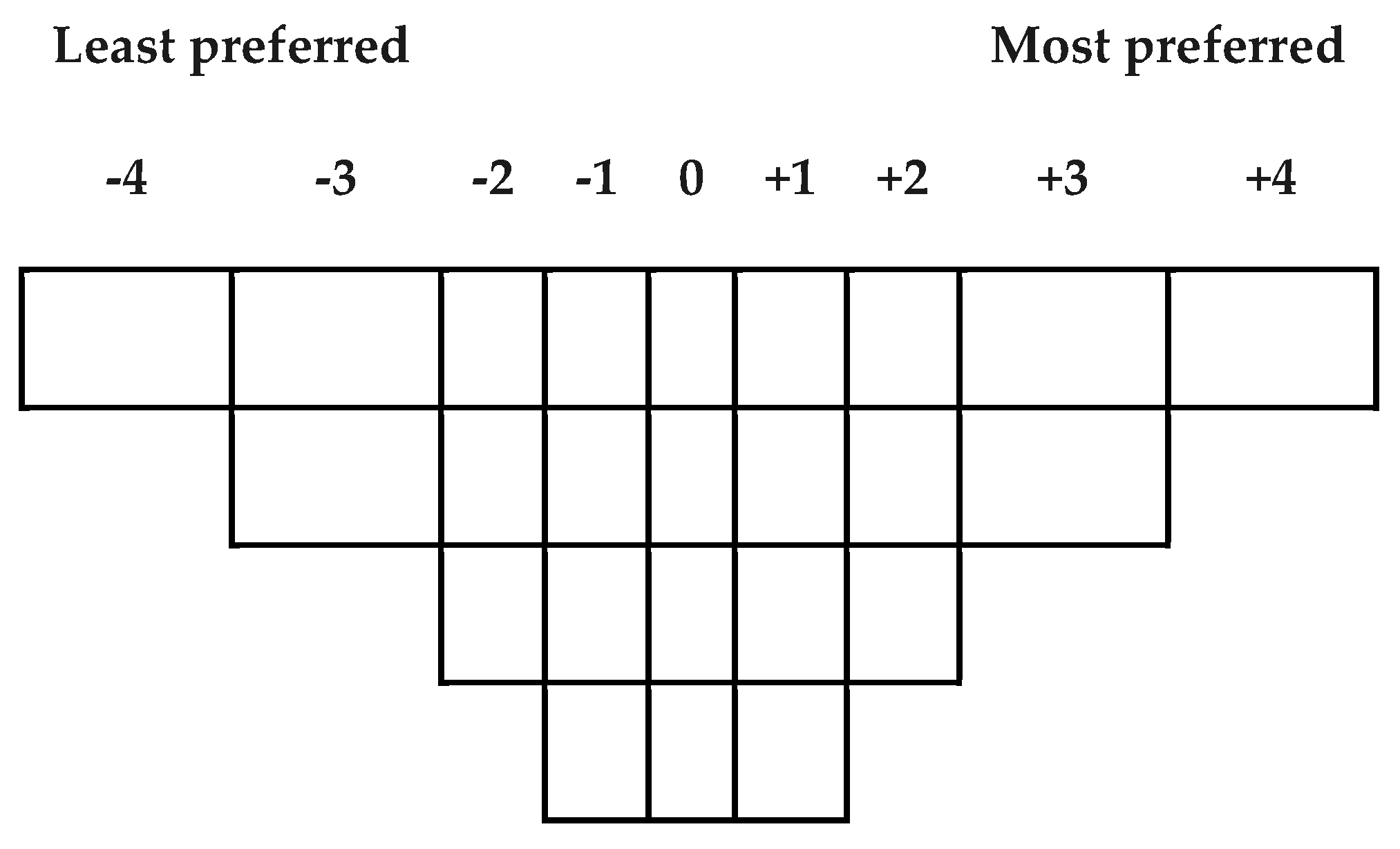
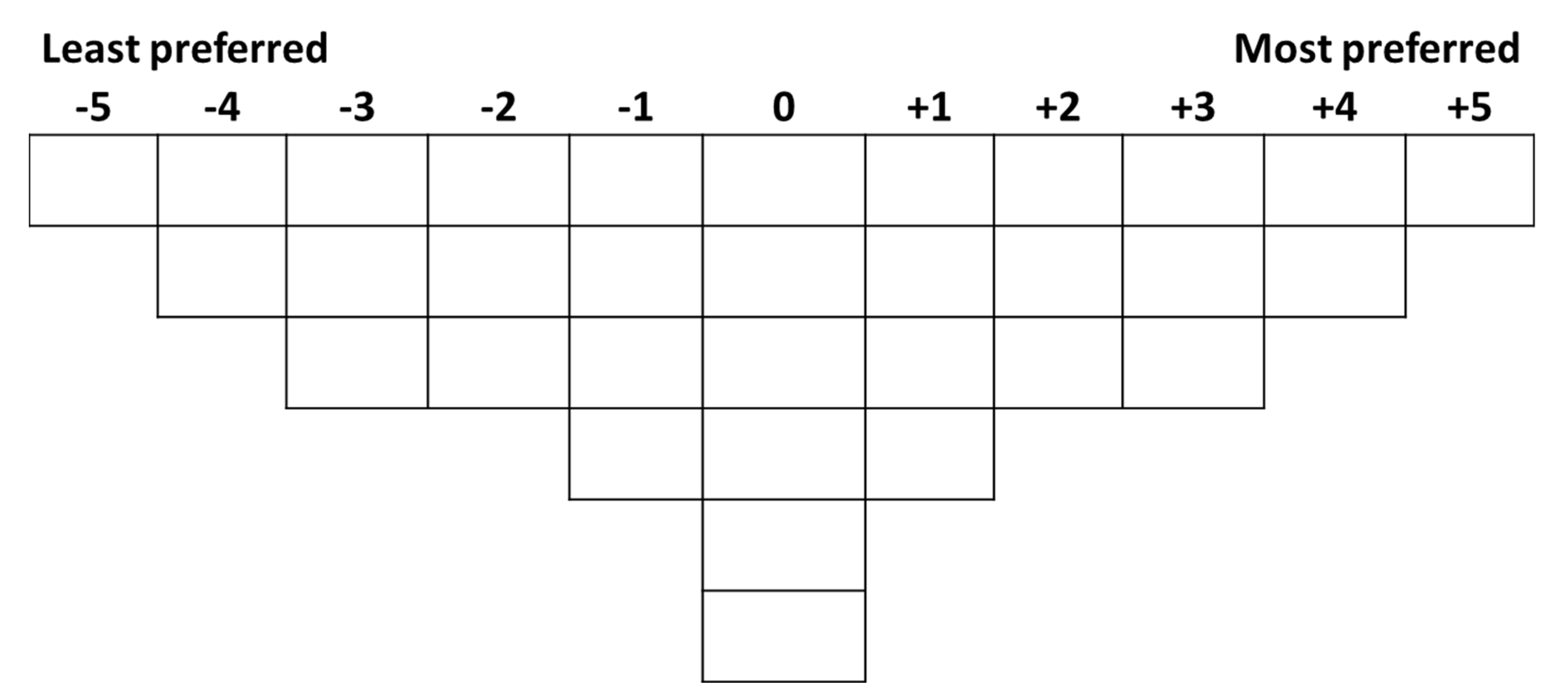
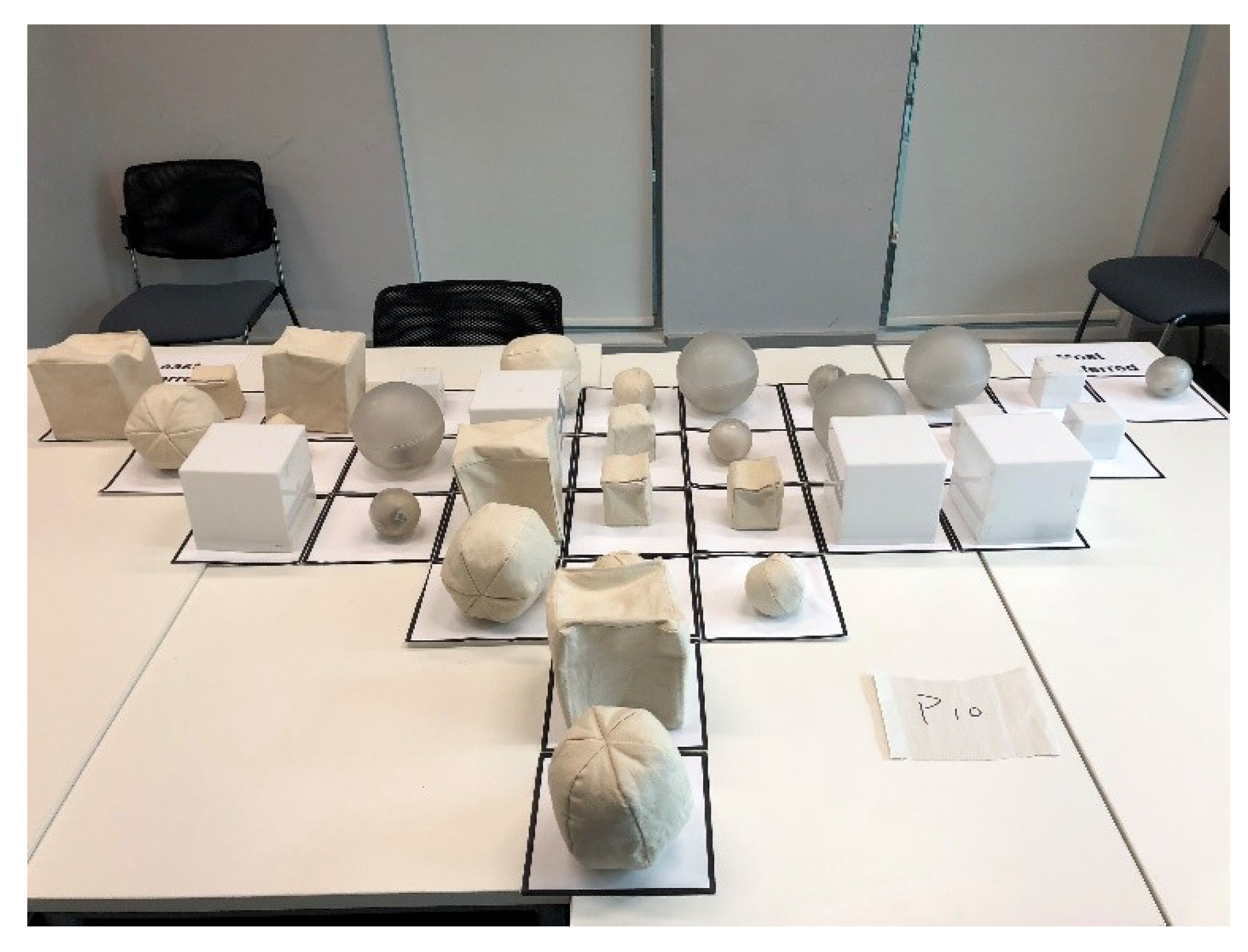
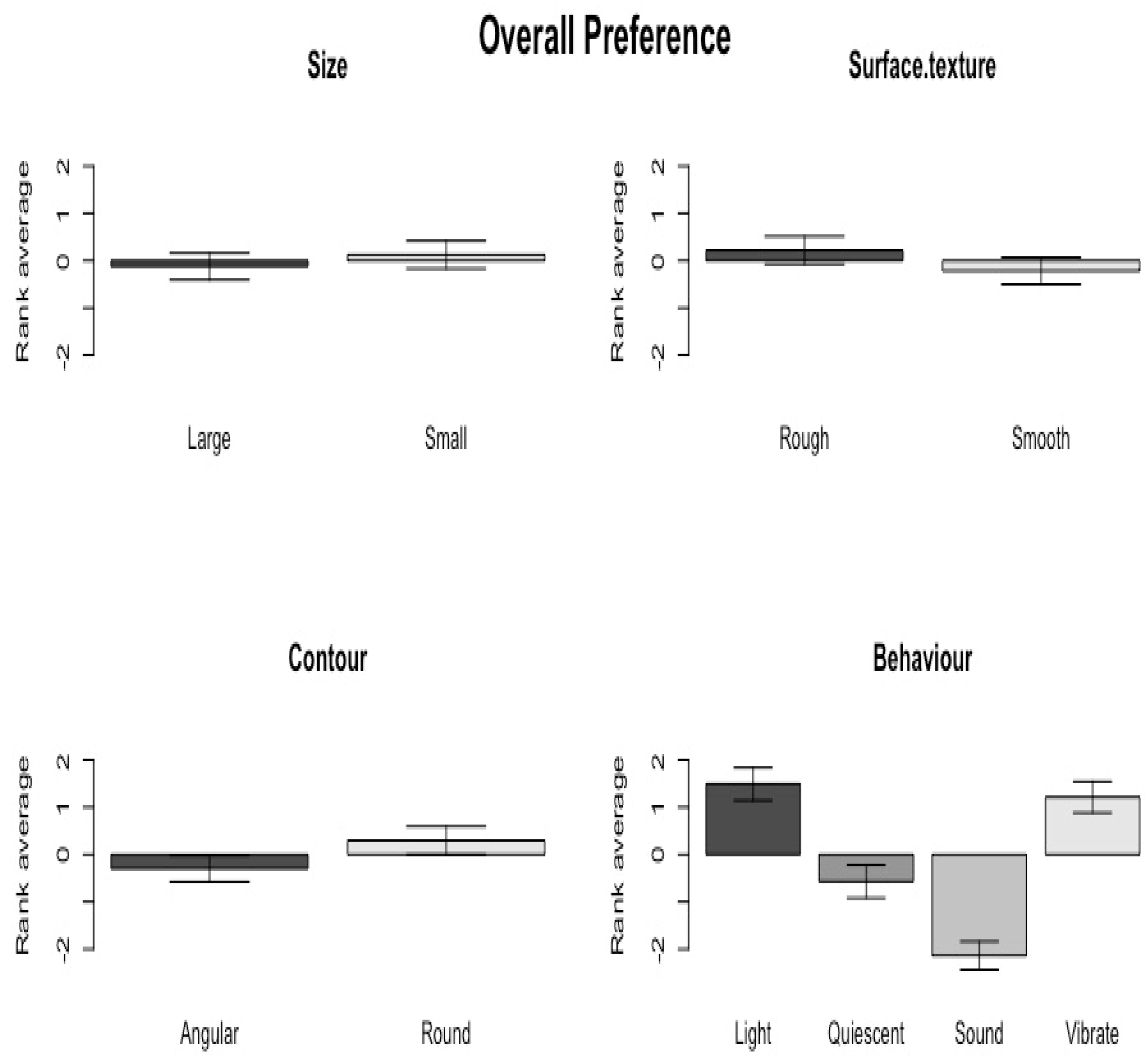
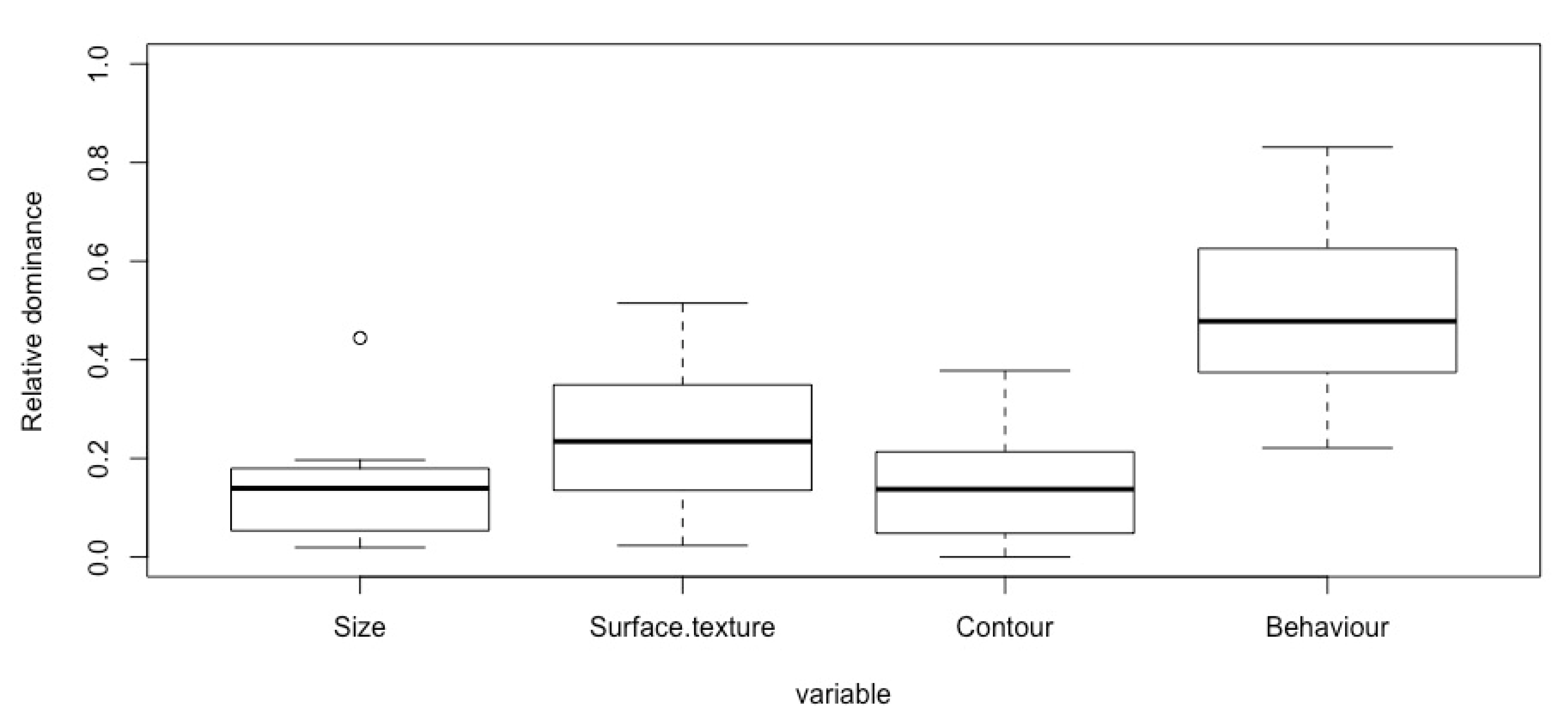
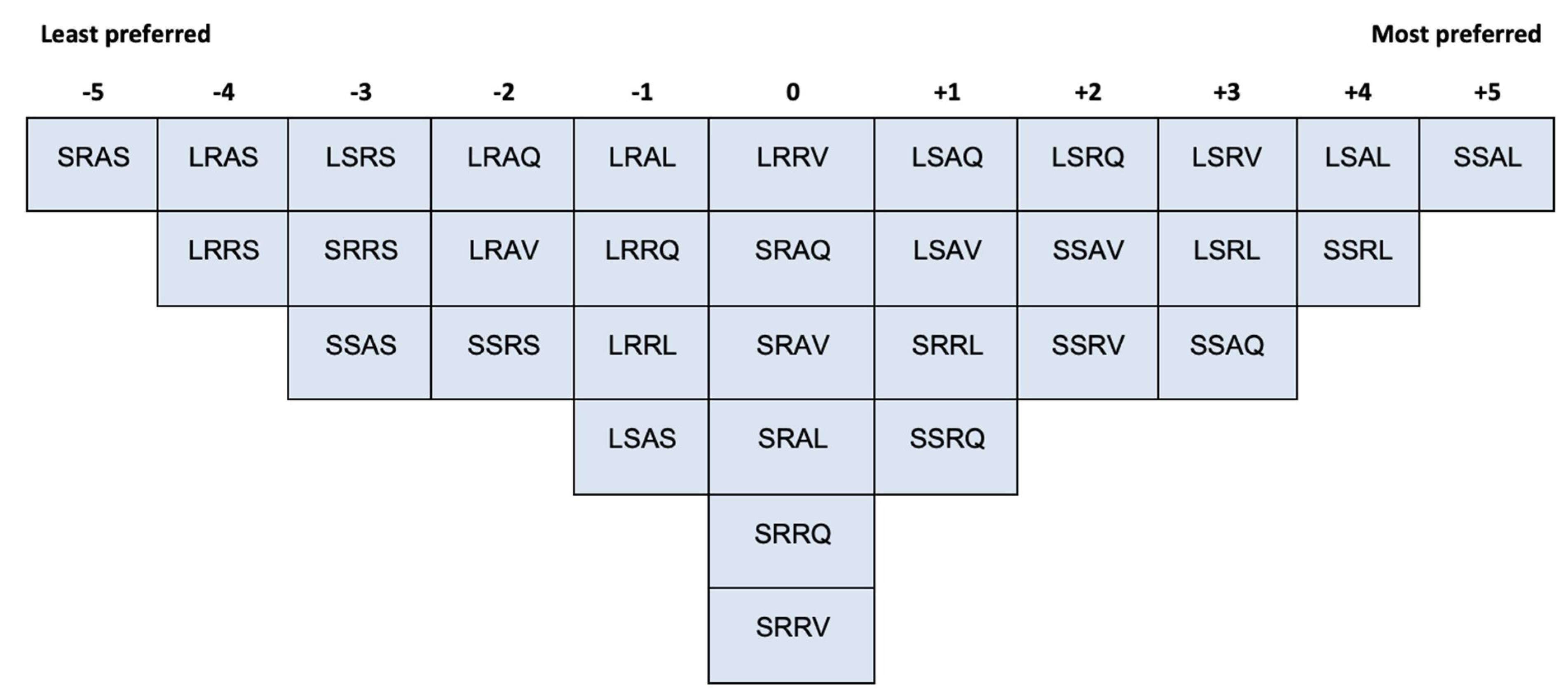
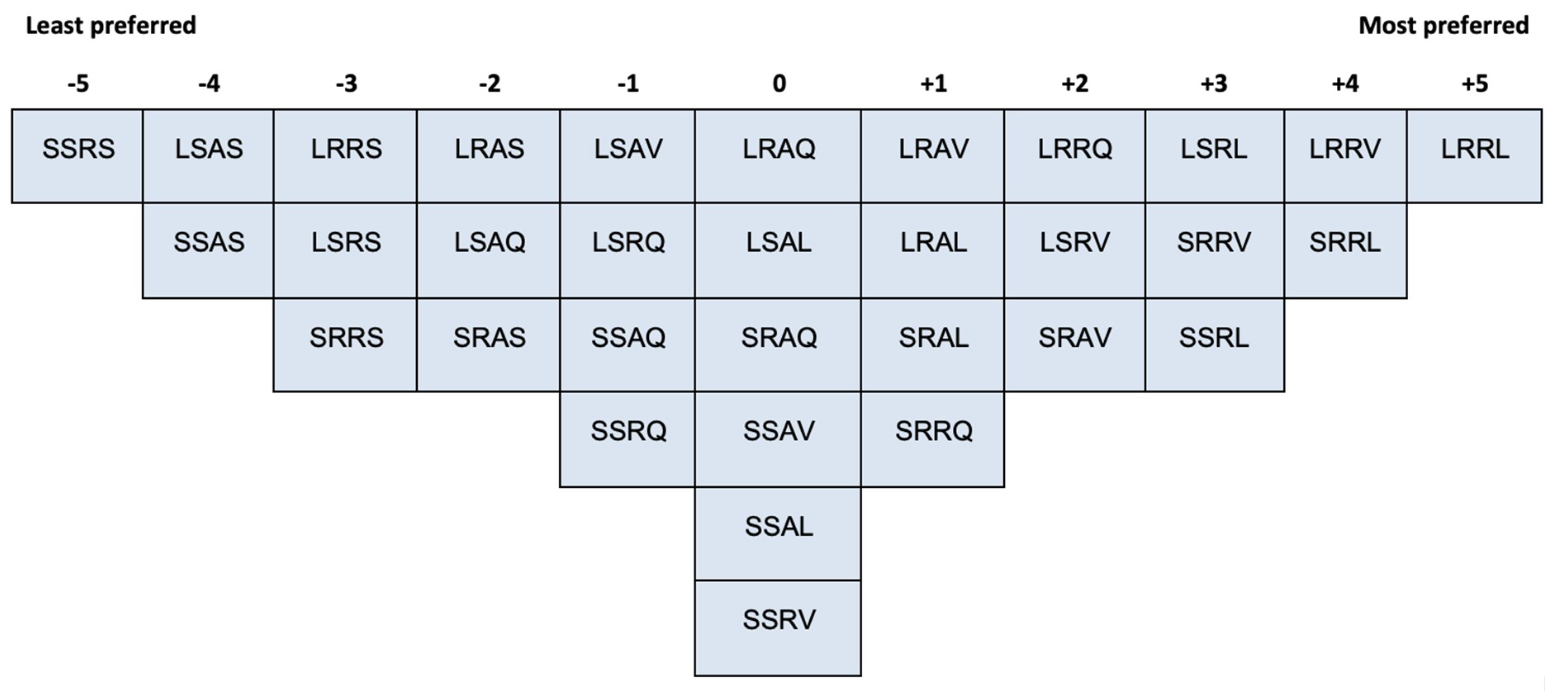
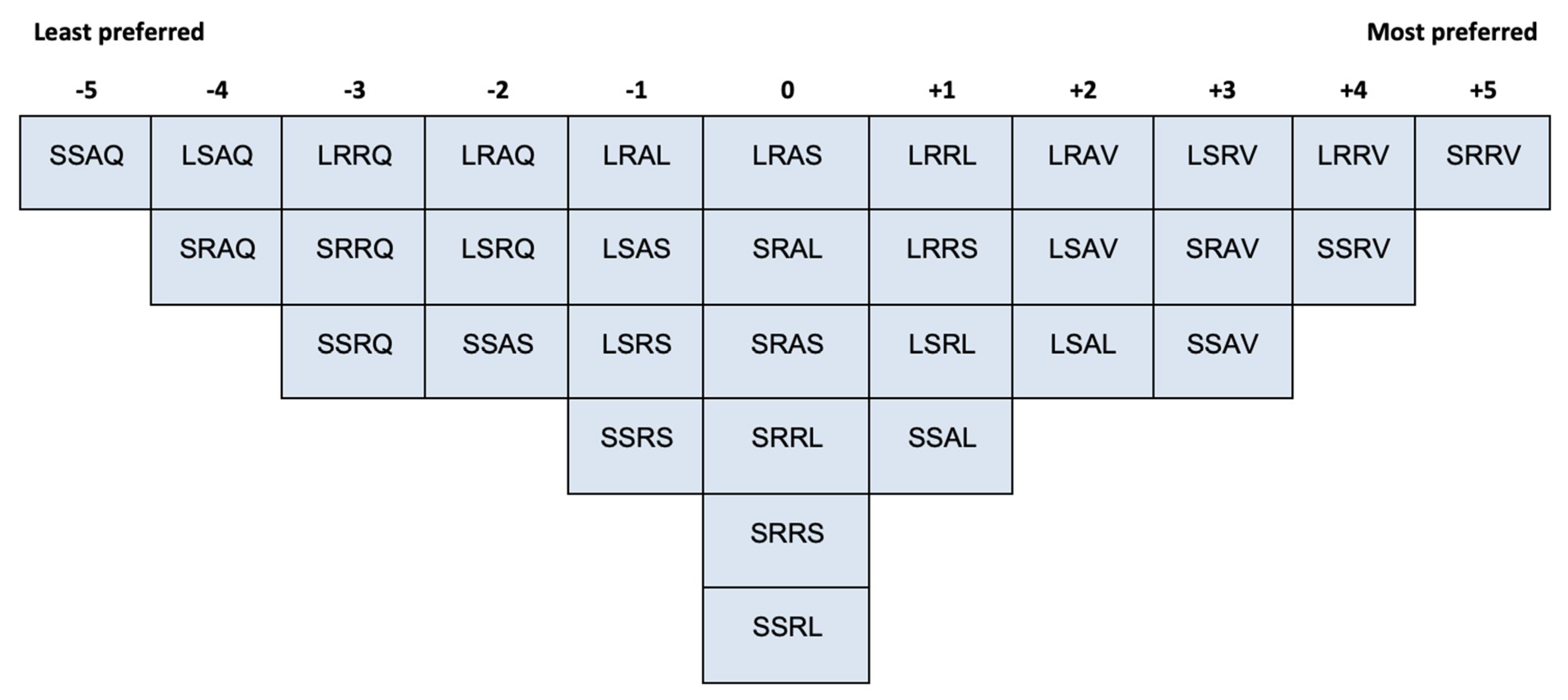
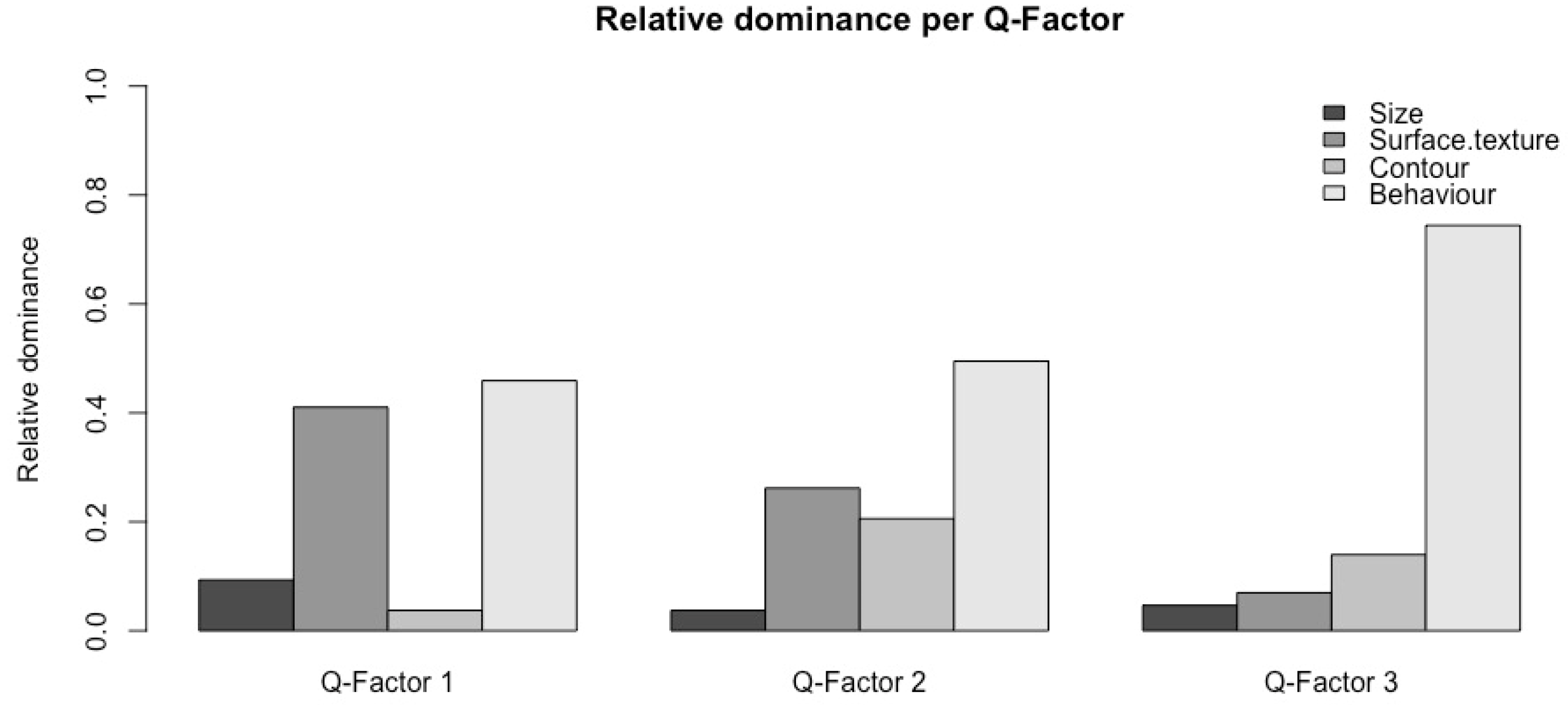
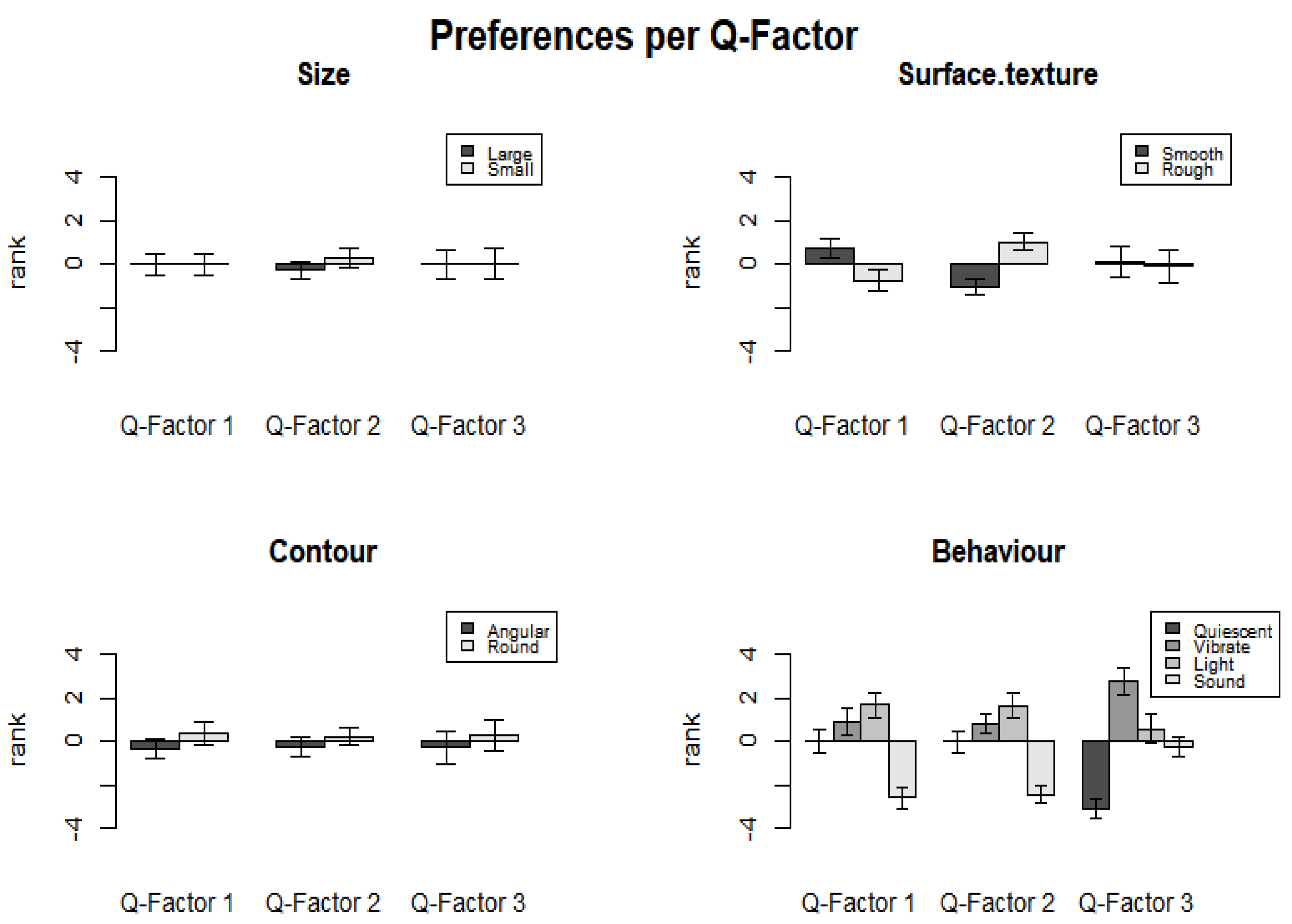
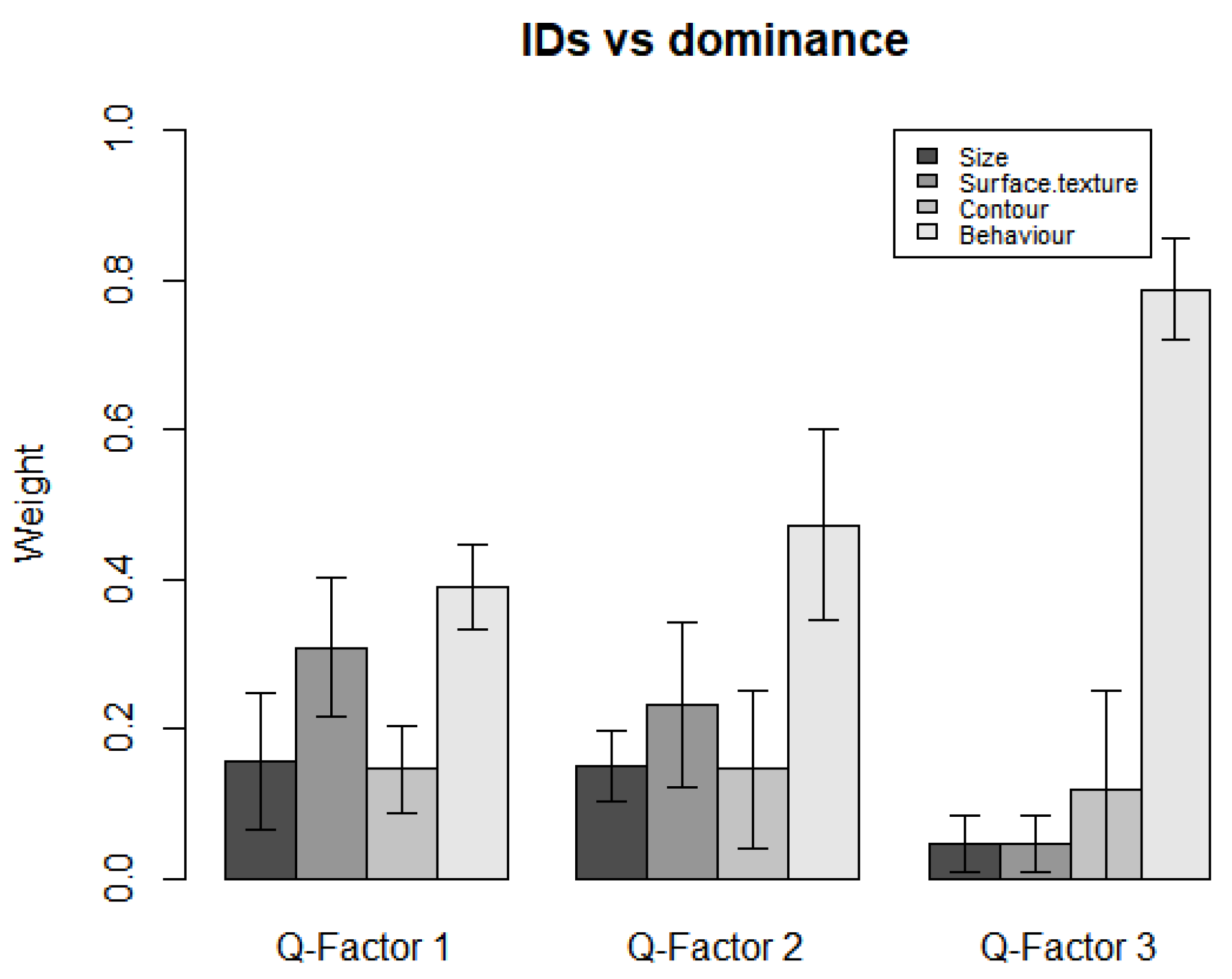
| Form | Behaviour | ||
|---|---|---|---|
| Size | Surface Texture | Contour | |
| Small (7.5 cm) | Smooth (plastic) | Round (sphere) | Emit a light |
| Large (15 cm) | Rough (fabric) | Angular (cube) | Play a sound |
| Vibrate | |||
| Quiescent | |||
| Q-Factor 1 | Q-Factor 2 | Q-Factor 3 | |
|---|---|---|---|
| Size | 0.093 | 0.038 | 0.049 |
| Surface texture | 0.410 | 0.248 | 0.024 |
| Contour | 0.037 | 0.210 | 0.146 |
| Behaviour | 0.459 | 0.504 | 0.780 |
| Variable | df | Chi-Square | p |
|---|---|---|---|
| Factor * Size | 2 | 0.13 | 0.935 |
| Factor * Texture | 2 | 1.98 | 0.372 |
| Factor * Contour | 2 | 3.52 | 0.172 |
| Factor * Behaviour | 6 | 5.32 | 0.503 |
© 2020 by the authors. Licensee MDPI, Basel, Switzerland. This article is an open access article distributed under the terms and conditions of the Creative Commons Attribution (CC BY) license (http://creativecommons.org/licenses/by/4.0/).
Share and Cite
Gao, J.; Soranzo, A. Individual Differences in Aesthetic Preferences for Multi-Sensorial Stimulation. Vision 2020, 4, 6. https://doi.org/10.3390/vision4010006
Gao J, Soranzo A. Individual Differences in Aesthetic Preferences for Multi-Sensorial Stimulation. Vision. 2020; 4(1):6. https://doi.org/10.3390/vision4010006
Chicago/Turabian StyleGao, Jie, and Alessandro Soranzo. 2020. "Individual Differences in Aesthetic Preferences for Multi-Sensorial Stimulation" Vision 4, no. 1: 6. https://doi.org/10.3390/vision4010006
APA StyleGao, J., & Soranzo, A. (2020). Individual Differences in Aesthetic Preferences for Multi-Sensorial Stimulation. Vision, 4(1), 6. https://doi.org/10.3390/vision4010006





